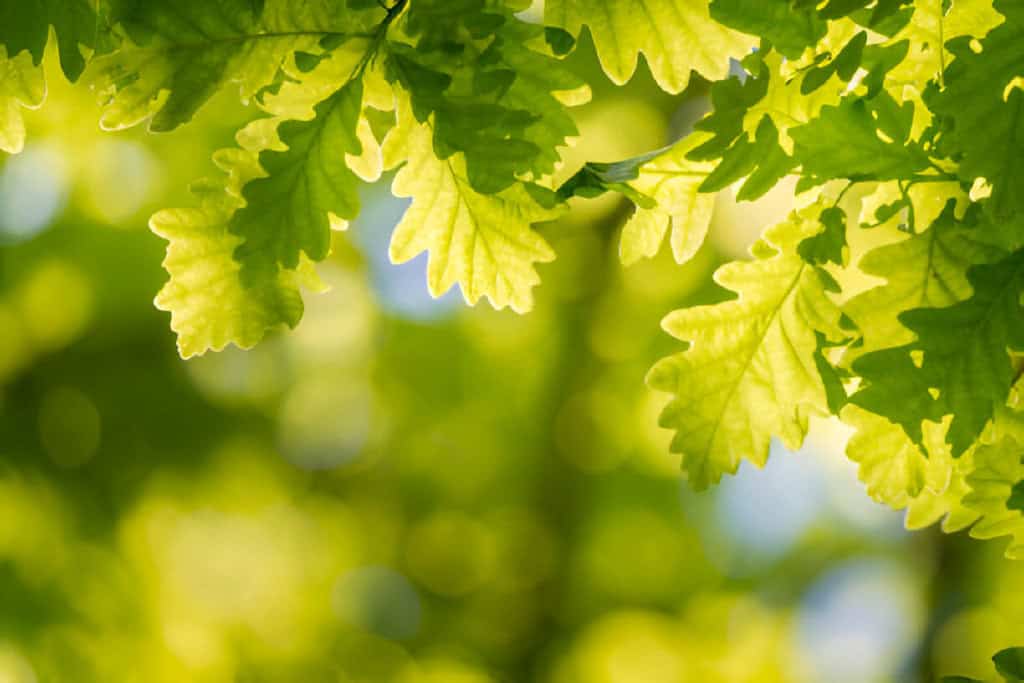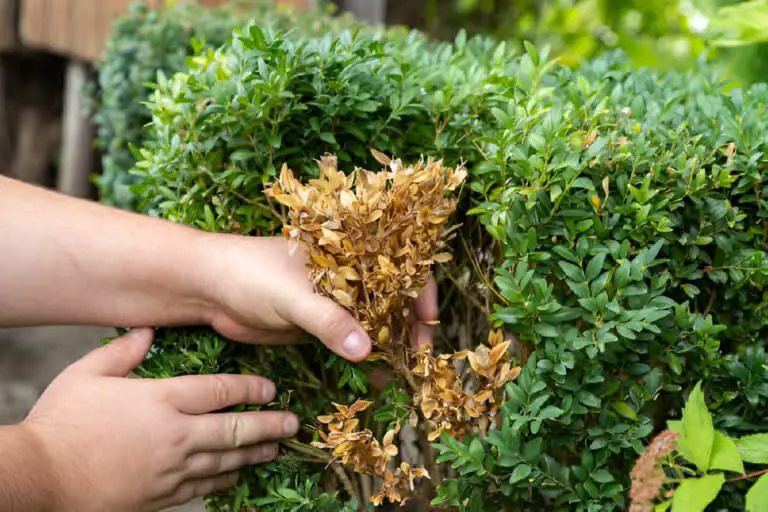Why Is My Oak Tree Losing Leaves in Summer? (And How to Treat Them)

Have you ever noticed your oak tree losing leaves in the middle of summer and wondered what could be causing it? While it’s normal for some leaf drop to occur during this season, excessive leaf loss can be a sign of underlying issues that need to be addressed.
In this article, we’ll explore why oak trees may lose leaves in summer. We’ll also provide you with effective treatments to help your tree recover. Understanding these causes and remedies will not only help you save your oak tree but also ensure its long-term health and beauty.
Natural Leaf Drop

One of the most common reasons for oak trees to lose leaves in the summer is natural leaf drop. Some oak trees, like live oaks, naturally drop their leaves in the winter and regain new ones in the spring.
This process, also known as “leaf senescence,” is a natural part of the tree’s growth cycle. During periods of high stress, such as drought or extreme heat, oak trees may shed some of their leaves to conserve water and energy.
Solution: If a natural leaf drop is the cause, there is no need for immediate concern. Ensure your oak tree receives adequate water, especially during prolonged dry spells. Mulching around the base of the tree can help retain moisture and keep the roots cool.
Drought Stress
Drought stress is another significant factor that can cause oak trees to lose leaves in the summer. When water is scarce, trees shed leaves. This reduces the area from which water is lost through transpiration. This is a survival mechanism to conserve water and protect the tree’s vital structures.
Solution: Water your oak tree deeply and infrequently, ensuring the soil is moist but not waterlogged. A slow, deep watering method is best, allowing the water to penetrate deeply into the soil. Adding a layer of mulch can help retain soil moisture and reduce evaporation.
Insect Infestation
Insects can wreak havoc on oak trees, causing them to lose leaves prematurely. Pests like aphids, caterpillars, and borers feed on the tree’s leaves and stems, leading to leaf drop and other symptoms of distress.
Check your oak tree often. Look for signs of insect infestation, like insects, holes in the leaves, or sticky residue. If you detect pests, try using insecticidal soap or neem oil. They can manage the infestation. In severe cases, you may need to consult a professional arborist for targeted treatments.
Fungal Diseases
Fungal diseases, such as oak wilt and anthracnose, can cause oak trees to lose their leaves in the summer. These diseases disrupt the tree’s vascular system, preventing the proper flow of water and nutrients.
Solution: Fungal diseases often require professional diagnosis and treatment. If you suspect your oak tree is affected, contact a certified arborist for an evaluation. Fungicides and other treatments may be necessary to control the spread of the disease.
Nutrient Deficiency
A lack of essential nutrients can weaken your oak tree, making it more susceptible to leaf drop. Trees need nitrogen, phosphorus, and potassium. These are critical for healthy leaves and overall tree health.
Solution: Conduct a soil test to determine nutrient levels and deficiencies. Based on the results, apply a balanced fertilizer to provide the necessary nutrients. Follow the manufacturer’s instructions to avoid over-fertilization, which can also harm the tree.
Environmental Stress
Pollution, construction, and soil compaction are environmental stressors. They can cause oak trees to lose their leaves. These factors can damage the tree’s root system and disrupt its ability to absorb water and nutrients.
Solution: Minimize environmental stress. Protect your oak tree from construction and heavy machines. Avoid compacting the soil around the tree’s root zone, and ensure the area is well-aerated. Adding organic matter to the soil can improve its structure and water-holding capacity.
Transplant Shock
If your oak tree has been recently transplanted, it may experience transplant shock, leading to a leaf drop. This stress response happens as the tree adjusts to its new home. It is as it establishes its root system.
Solution: Give your transplanted oak tree plenty of water and care during its first few years in its new location. Mulching and watering help the tree. They reduce transplant shock and grow healthy roots.
Related: Zucchini Transplant Shock: How to Treat and Recover
Table: Common Causes of Summer Leaf Drop in Oak Trees and Solutions
| Cause | Symptoms | Solution |
| Natural Leaf Drop | Some leaves turning yellow and falling off | Ensure adequate watering, mulch around the base |
| Drought Stress | Leaves wilting, browning, and falling off | Deep, infrequent watering, mulch to retain moisture |
| Insect Infestation | Holes in leaves, visible insects, sticky residue | Inspect regularly, use insecticidal soap or neem oil |
| Fungal Diseases | Discolored leaves, leaf spots, premature leaf drop | Contact an arborist, apply fungicides if necessary |
| Nutrient Deficiency | Yellowing leaves, stunted growth | Conduct soil test, apply balanced fertilizer |
| Environmental Stress | Leaf drop, stunted growth, damaged roots | Protect from construction, avoid soil compaction, and improve soil structure |
| Transplant Shock | Leaf drop after transplanting | Regular watering, mulching, and care during establishment period |
| Also read: How to Treat Crabapple Tree Losing Leaves |
How Can I Tell if My Oak Tree Is Healthy Despite Losing Leaves?
To determine if your oak tree is healthy despite losing leaves, you should consider several factors. Here are some steps to help you assess the health of your oak tree:
- Check for New Growth: Look for new buds or leaves emerging from the base of the leaf petiole. This indicates that the tree is preparing for its normal yearly leaf cycle and is not experiencing a disease or pest issue.
- Inspect for Dead Branches: Check if the branches are brittle and snap when bent. If they are brown on the inside instead of greenish-white, they are likely dead. A normal tree may have some dead branches, but if more than 10% of the branches are dead, it may indicate a problem. Consult a certified arborist or local county extension office for assistance.
- Monitor for Disease Symptoms: Check for signs of disease, such as wilting leaves, tan or bronze-colored leaves, or black or brown bark. Oak wilt, for example, can cause wilting leaves that turn tan or bronze, but it typically occurs in the summer, not in the spring.
- Assess Environmental Factors: Ensure the tree is receiving adequate water, especially during dry periods. Also, look for signs of pest infestations, like oak borers or caterpillars. Treat any infestations quickly.
- Consult an Expert: If you are unsure about the health of your oak tree, consult with an ISA-certified arborist or a local tree care professional. They can help diagnose any issues and recommend appropriate treatments.
Follow these steps. They can help you determine if your oak tree is healthy despite losing leaves. Then, take the needed steps to keep it healthy.
Conclusion
Understanding why your oak tree is losing leaves in summer is the first step towards restoring its health and vitality. You can help your oak tree. Do this by finding the causes and applying the right treatments. Then, it will recover and thrive. Regular monitoring, proper care, and timely help are needed. They keep an oak healthy and able to endure its environment.
You may face natural leaf drop. It is due to drought, insects, fungi, poor nutrients, environment stress, or transplant shock. But, you can handle each with the right approach. With patience and dedication, your oak tree can continue to be a magnificent and enduring part of your landscape.






